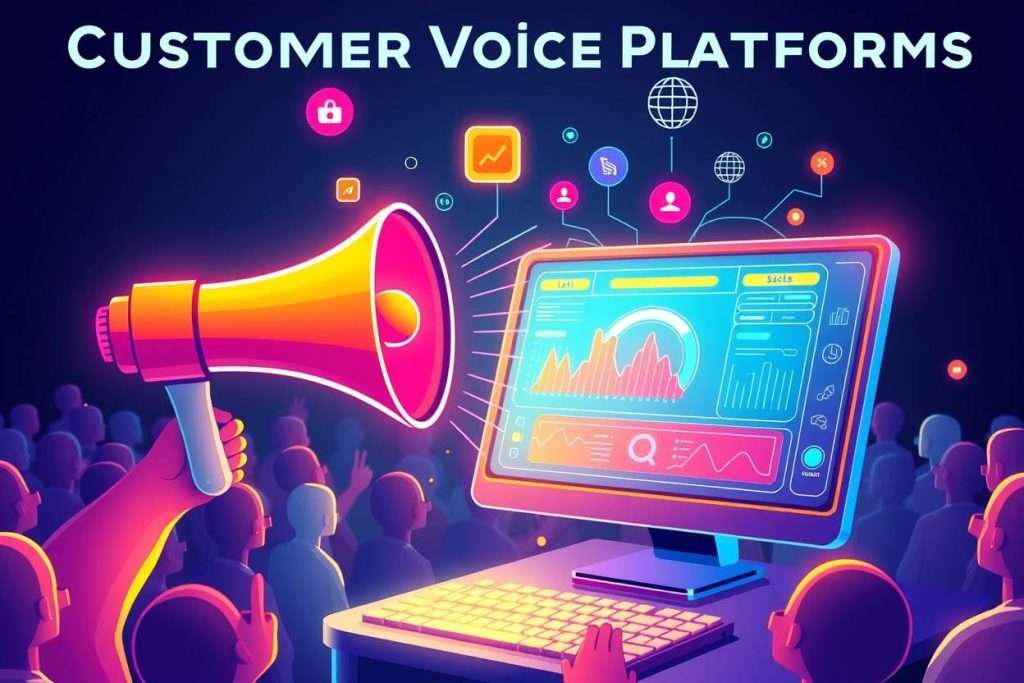Top 7 Voice of Customer Platforms

Success in customer experience is won by those who understand their audience at a fundamental level. Voice of Customer (VoC) platforms are not just software tools, they are strategic engines that empower organizations to listen, analyze, and act on structured and unstructured customer feedback. Whether routed through surveys, social media, contact centers, or product reviews, this feedback serves as a living blueprint for delivering improved products, services, and user journeys.
The rapid evolution of voice of customer platforms has aligned closely with breakthroughs in artificial intelligence, big data analytics, and user interface design. Many companies have moved beyond the era of standalone survey solutions to adopt comprehensive platforms that synthesize feedback from dozens of channels, applying deep learning to reveal patterns that are invisible to the naked eye.
Why Invest in a Voice of Customer Platform?
Customer expectations continue to shape the competitive environment across all industries. Organizations that treat feedback as a tactical asset often witness transformative shifts, not just in Net Promoter Scores or satisfaction ratings, but in bottom-line growth, operational efficiency, and brand reputation. Investments in VoC technology unlock several crucial benefits:
- Data-Driven Decision Making: VoC platforms supply decision-makers with clarity. Instead of relying on abstract hunches, strategies are built upon evidence, data aggregates, and predictive analytics.
- Real-Time Responsiveness: Issues and opportunities emerge more quickly. Companies no longer discover systemic issues weeks or months after the fact, modern VoC technology delivers alerts within hours or minutes.
- Holistic Understanding: By consolidating multichannel feedback, organizations assemble a 360-degree customer perspective otherwise missed in departmental silos.
- Actionable Insights: Platforms automatically prioritize themes and urgent pain points, creating clear next steps and accountability across teams.
What Do Top-Tier VoC Platforms Offer?
The most innovative solutions are distinguished by their ability to capture meaning from massive volumes of data, applying advanced statistical and semantic techniques to surface emergent themes and subtle emotional cues. Here’s how elite platforms set themselves apart:
- Omnichannel Aggregation: Integrate feedback from every possible channel, reviews, surveys, support tickets, emails, SMS, social media, and call transcripts.
- Emotion & Intent Analysis: Move beyond basic sentiment scoring to detect emotions such as frustration, excitement, and confusion, as well as intent to churn or recommend.
- Automated Workflows: Route insights to the right internal teams and ensure follow-up with escalation logic and SLA tracking.
- Benchmarking and Industry Comparisons: Assess performance against both internal standards and external competitors.
- Self-Serve Reporting and Deep Customization: Allow business units, executives, and analysts to tailor dashboards and deep-dive reports.
The Best Voice of Customer Platforms List

1. Revuze
Revuze operates at the intersection of automation, natural language processing, and category-level analytics. Its self-learning engine continuously crawls millions of data points, spanning product reviews, customer service logs, online forums, surveys, and more. What truly distinguishes Revuze is its hands-off intelligence; customers rely on Revuze to highlight emergent trends, sentiment shifts, and outlier feedback, all without constant manual configuration.
Revuze is ideal for organizations with robust eCommerce, consumer goods, or multi-brand operations. Revuze excels when proactive insight discovery and benchmarking are mission-critical.
Key Functionalities:
- Product Specific Analytics: Isolate insights by SKU, product family, price band, geolocation, and retail partner.
- Competitor Monitoring: Gain real-time insights into competing brands, including feature-level sentiment and marketplace responses.
- Consumer Language Analysis: Decipher the vocabulary and nuance unique to each product category, making themes actionable and relevant.
2. Forsta
Born from the consolidation of several leading research and feedback technology providers, Forsta enables organizations to design, deploy, and analyze sophisticated VoC programs at scale. It is prized for its flexibility and depth, a preferred choice for enterprises with complex, multi-region requirements and advanced analytical needs.
Highlights:
- Survey and Data Collection Tools: Extensive question types, multilingual support, custom branding, and quota management.
- Data Visualization: Real-time dashboards, heatmaps, word clouds, and drill-down reports suitable for both executives and analysts.
- API and Integrations: Seamless data transfer to CRM, ERP, and visualization platforms.
- Cross-Channel Listening: Aggregate and normalize feedback across phone, SMS, web, app, and third-party sites.
3. InMoment
InMoment is a pioneer in merging experiential, operational, and financial data. Its XI (Experience Improvement) platform encourages organizations to break down silos, combining customer and employee feedback streams with transaction and behavioral data.
Highlights:
- Adaptive Listening: Automate feedback requests based on behavior, triggers, and milestones throughout the customer journey.
- Predictive Modeling: Uncover drivers of loyalty, churn, and spend using sophisticated machine learning.
- Storytelling Reports: Transform raw numbers into interactive narratives easily consumed and acted upon by business users.
- Industry Templates: Out-of-the-box solutions for retail, hospitality, healthcare, and more for rapid deployment.
4. Calabrio
Calabrio’s VoC proposition is uniquely strong for contact-center-heavy businesses. By capturing and analyzing every voice interaction, chat session, and screen activity, Calabrio empowers organizations to monitor sentiment, performance, and compliance in real-time.
Highlights:
- Speech-to-Text and Sentiment Analysis: Uncover mood, escalation triggers, and emergent topics from thousands of calls per day.
- Agent Performance Management: Link customer sentiment directly to agent training, quality assurance, and incentive plans.
- Process Automation: Identify repetitive issues and automate knowledge responses or escalation flows to reduce customer effort.
5. Keatext
Keatext offers a refreshing approach, making AI-powered analytics accessible to organizations of all sizes, regardless of data science expertise. Rather than focusing on bells and whistles, Keatext delivers clarity and rapid insight via a modern interface designed for business users.
Highlights:
- Plug-and-Play Integration: Connect and analyze data from Zendesk, Intercom, Freshdesk, Salesforce, and more within minutes.
- Theme Detection: Automatically cluster feedback into prioritized themes and root causes, displayed with actionable context.
- Sentiment & Urgency Scores: Faster identification of critical issues and actionable praise, reducing response lag.
6. GetFeedback
GetFeedback’s lineage traces to SurveyMonkey, but its evolution has centered on adaptability, design, and integration speed. The platform combines drag-and-drop survey builders with omnichannel distribution, real-time alerts, and robust analytics.
Highlights:
- Intuitive Survey Creation: Non-technical users can easily build branded surveys, launch campaigns, and view response trends.
- Adaptive Distribution: Deploy surveys via email, SMS, web, mobile, and integrate results with Salesforce or Slack for immediate action.
- Customizable Dashboards: Cohorts, segmentation, trend analysis, and role-based access controls.
7. Zonka Feedback
Zonka Feedback’s modular architecture and robust reporting make it a favorite among multi-touchpoint organizations, restaurants, healthcare, retail, education, and more. The platform prioritizes both agile deployment and in-depth analytics, with special consideration for in-person and offline scenarios.
Highlights:
- Omnichannel Capture: Deploy surveys at kiosks, on tablets, via QR code, web widgets, SMS, or email.
- Feedback-to-Ticket Automation: Instantly convert negative feedback into helpdesk tickets, assign, and track resolution by team or individual.
- Granular Reporting: Drill into trends by location, employee, device, product, and more.
Interpreting Results: When Data Becomes Strategy
Collecting feedback is only half the battle; the real battleground is in interpretation and execution. VoC platforms now offer actionable roadmaps delivered through compelling data narratives, interactive dashboards, and workflow automation.
Consider a retail business using Revuze or GetFeedback: weekly reporting might expose a sudden spike in negative sentiment attributed to delayed shipping at a specific distribution center. Automated alerts prompt the logistics team to investigate, resolve, and respond with transparency, closing the feedback loop and transforming a potential reputation hit into evidence of operational agility.
Or envision a healthcare provider relying on Forsta: deep demographic segmentation reveals that satisfaction is lagging among elderly patients using telemedicine tools. The product team launches targeted interviews and usability tests, then iterates on the app, with changes and follow-up surveys confirming significant improvement.
The most sophisticated organizations differentiate themselves not by gathering the most feedback, but by creating virtuous cycles of insight and action, building cultures of continuous improvement animated by customer voices.
How to Evaluate and Select a VoC Platform: Making the Right Match
Given the diversity of solutions available, matching VoC technology to business priorities requires clarity of both needs and future vision. Consider developing an evaluation matrix organized around these dimensions:
- Source Coverage: Do we receive feedback mainly from digital, physical, or blended channels? Which solutions best mirror our ecosystem?
- Scalability: Can the platform grow from a single department to global, multilingual deployment?
- Analytics Sophistication: Is it important to identify root causes, run predictive models, or simply monitor themes and trends?
- Integration Requirements: Must the platform sync bidirectionally with CRM, marketing clouds, helpdesk, or custom dashboards?
- Security and Compliance: Is HIPAA, GDPR, or other regulatory adherence mandatory for our sector?
- Usability and Training: How quickly can teams onboard, access insights, and act, without specialized technical support?
- Support and Community: Does the vendor offer robust support resources, community forums, and educational materials?
The Evolution of Customer Understanding: Anticipating What’s Next
As technological progress accelerates, VoC solutions are poised to offer even more transformative business benefits. Some emerging frontiers include:
- Predictive Analytics and AI Recommendations: Algorithms will proactively suggest changes to products, processes, and content, often before customers articulate specific grievances.
- Integration with Employee Experience and Operational Data: Platforms will increasingly bridge VoC with VoE (Voice of Employee), identifying where internal issues drive customer dissatisfaction.
- Natural Language Generation (NLG) Summaries: Automatic translation of analytics into executive briefings, team checklists, and individualized action plans.
- Behavioral and Journey Analytics: Mapping feedback to precise micro-moments, from first website visit to repeat purchases, guiding more nuanced personalization.




